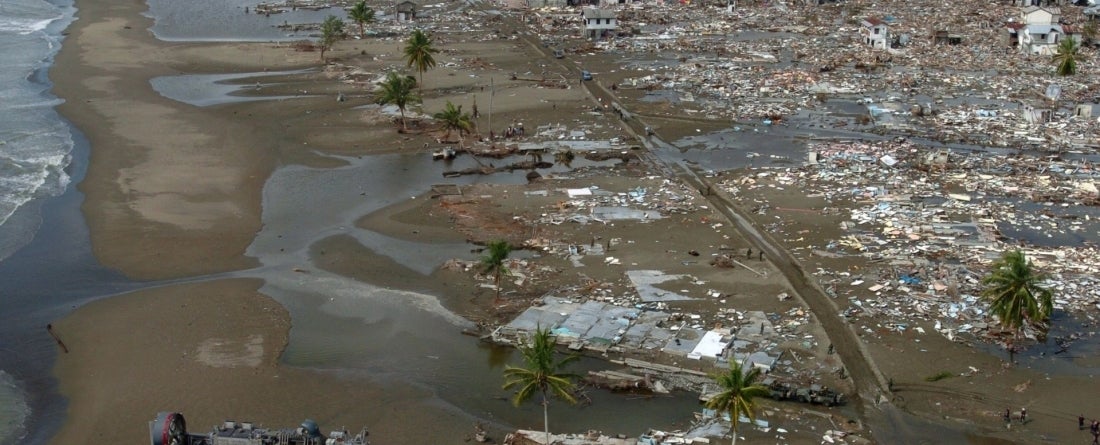
A recent study by Catherine Z. Worsnop, assistant professor at the School of Public Policy and CISSM research fellow, and Kathleen M. Vogel, professor at the Arizona State University, demonstrates a link between two pressing global security concerns: natural disasters and human trafficking.
The article, published in Studies in Conflict & Terrorism, builds on previous work by Worsnop finding that countries that have recently experienced a disease outbreak are more likely to be sources of trafficking. It also extends research by Vogel on trafficking in the Caribbean and African Islands and on the Palermo Protocol. Worsnop and Vogel investigate whether disasters resulting from other types of natural hazards such as earthquakes, floods and tsunamis are also associated with human trafficking. It asks whether such disasters could be a magnet for trafficking and increase the likelihood of a state being a destination for trafficking.
The study finds evidence that “disaster business” dynamics connect disasters to in-bound trafficking. The financial and political incentives of recovery and reconstruction increase demand for labor and sex, creating perceived economic opportunity for profit from trafficked individuals. Diversion of government attention and resources to disaster response can also make it easier for traffickers to operate undetected. As such, natural disasters can be a “pull” factor for both trafficked individuals and traffickers, raising the likelihood that states that have experienced a disaster will be destinations for trafficking.
Natural disasters will occur more frequently due to climate change. At the same time, human trafficking persists globally despite increased attention and state commitments to the United Nations (UN) Protocol to Prevent, Suppress and Punish Trafficking in Persons, Especially Women and Children (the Palermo Protocol). This study adds to the growing research agenda examining natural disasters and international security and cooperation in issue areas ranging from trade flows to human rights. Overall, the findings add to mounting evidence of natural disasters’ impact on both human security and on international cooperation.
From a policy perspective, the study points to a need for countries, international organizations, NGOs and other actors involved in or planning for disaster response to better prepare for increased risk of human trafficking. The study points to specific conditions that may exacerbate the problem. For example, more damaging disasters and weak anti-trafficking capacity make it more likely that a disaster will increase trafficking inflows. Similarly, political pressures to rebuild quickly can reduce the “protective” effect of having stronger state capacity and can lead policymakers to intentionally relax capacities like labor regulations.
The relationships found in this article are not deterministic; they can be disrupted by policy choices like increased public awareness, training for law enforcement and first responders or increased attention to safe labor practices. The effectiveness of these and other policy responses must be better assessed. Moreover, some interventions like increased police presence or movement restrictions in the name of countering trafficking risk abuse must be used carefully to avoid excessive restrictions on individuals’ freedom of movement or human rights abuses. If governments think proactively about how to integrate anti-trafficking efforts into disaster response in a way that is tailored to national and local circumstances and accounts for existing vulnerabilities, then the human costs of disasters are less likely to be exacerbated by human trafficking.



